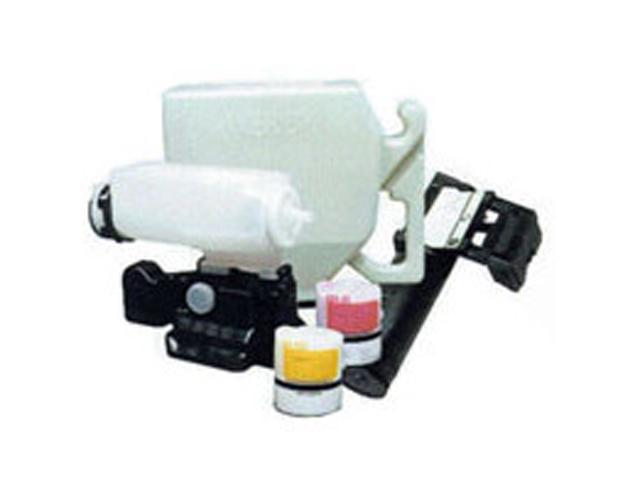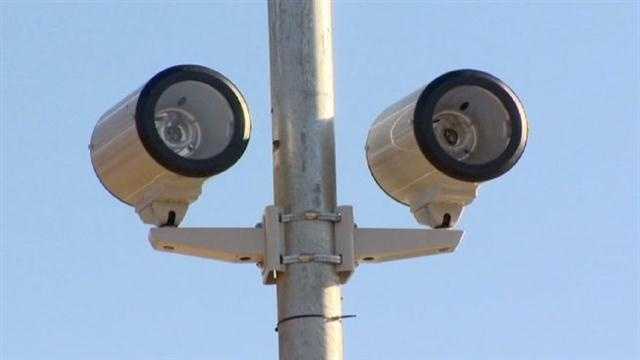The researchers at the Palo Alto Research Center (PARC), a Xerox Company, are doing just that — engineering hyperspectral imaging technology to be lightweight, programmable and inexpensive enough for widespread use. BLI has named Xerox's line of document imaging solutions, including Scan to PC Desktop, their pick for Document Imaging Solutions Line of the Year for the fourth consecutive year (2014, 2015, 2016, 2017).
Fuji Xerox has developed Video Camera Auto Selection Technology that automatically detects a speaker to capture and indexes the recorded scenes so that people can select which scene to watch. Auto switching of cameras. 1: Eight cameras installed in a room and the method of selecting a camera.
Xerox Камеры, Вебкамеры и Сканеры скачать драйвер
Драйвера для устройств Xerox Камеры, Вебкамеры и Сканеры расположенны на данной странице. Выберите необходимый драйвер и нажмите СКАЧАТЬ. Или воспользуйтесь автоматическим поиском и установкой необходимого драйвера нажмите НАЧАТЬ ПРОВЕРКУ.
| Фирма | Описание устройства | Скачать |
|---|---|---|
| Xerox | DocuCentre 1050/2050 Local Scan | Скачать |
| Xerox | DocuCentre Local Scan | Скачать |
| Xerox | DocuMate 510 | Скачать |
| Xerox | DocuPrint C1190 FS | Скачать |
| Xerox | Fuji Xerox Able3121 Scsi Scanner | Скачать |
| Xerox | FX DC SC2020 (WIA - USB) | Скачать |
| Xerox | FX DocuCentre 1080 | Скачать |
| Xerox | FX DocuCentre 2000 | Скачать |
| Xerox | FX DocuCentre 2056/2058 Scan | Скачать |
| Xerox | FX DocuCentre S1810/S2010 | Скачать |
| Xerox | FX DocuCentre S2220/S2420 | Скачать |
| Xerox | FX DocuPrint C1190 FS Scanner | Скачать |
| Xerox | FX DocuPrint C2090 FS Scanner | Скачать |
| Xerox | FX DocuPrint C3290 FS Scanner | Скачать |
| Xerox | FX DocuPrint CM215 b (WIA) | Скачать |
| Xerox | FX DocuPrint CM215 f/fw (WIA) | Скачать |
| Xerox | FX DocuPrint CM225 fw (WIA) | Скачать |
| Xerox | FX DocuWide 6055 / 6035 | Скачать |
| Xerox | FX DocuWide9095a | Скачать |
| Xerox | FX DP CM205 b (WIA) | Скачать |
| Xerox | FX DP CM205 f/fw (WIA) | Скачать |
| Xerox | FX DP CM305 df (WIA - USB) | Скачать |
| Xerox | FX DP CM405 df (WIA - USB) | Скачать |
| Xerox | FX DP M105 b (WIA) | Скачать |
| Xerox | FX DP M158 b (WIA) | Скачать |
| Xerox | FX DP M158 f (WIA) | Скачать |
| Xerox | FX DP M200 fw (WIA) | Скачать |
| Xerox | FX DP M205 b (WIA) | Скачать |
| Xerox | FX DP M205 f/fw (WIA) | Скачать |
| Xerox | FX DP M215 b (WIA) | Скачать |
| Xerox | FX DP M215 fw (WIA) | Скачать |
| Xerox | FX DP M255 df (WIA) | Скачать |
| Xerox | FX DP M355 df (WIA - USB) | Скачать |
| Xerox | FX DP M455 df (WIA - USB) | Скачать |
| Xerox | Phaser 3300MFP | Скачать |
| Xerox | Phaser 6121MFP Scanner | Скачать |
| Xerox | Phaser 6121MFP-S Scanner | Скачать |
| Xerox | Scanner Interface | Скачать |
| Xerox | WorkCentre 3045NI | Скачать |
| Xerox | WorkCentre 3119 Series | Скачать |
| Xerox | WorkCentre 3220 | Скачать |
| Xerox | WorkCentre 4118 Series | Скачать |
| Xerox | WorkCentre 5016/5020 Scan | Скачать |
| Xerox | WorkCentre 6015N | Скачать |
| Xerox | Xerox 2400 | Скачать |
| Xerox | Xerox 4800 | Скачать |
| Xerox | Xerox 6400 | Скачать |
| Xerox | Xerox Card Scanner 200 | Скачать |
| Xerox | Xerox DocuMate 150 | Скачать |
| Xerox | Xerox DocuMate 152 | Скачать |
Spies in the Xerox machine: how an engineer helped the CIA snoop on Soviet diplomats.
Popular Science

January 1, 1997 | Stover, Dan
Xerox Cameras Amazon
During the dark days of the Cold War, when the world trembled at the sight of aerial photos of nuclear missile sites in Cuba, when secret agents slipped back and forth through the Iron Curtain, and swift U-2 airplanes flew dangerous intelligence missions, the United States' most effective spy may have been the most unexpected: a Xerox repairman.
It was 1962, the Cold War was in full swing, and the CIA was looking for new ways to gather intelligence on the Soviets. Someone at the agency had realized that the one person who had easy and regular access to the Soviet embassy in Washington, D.C., the one American who could come and go with no questions asked, was the Xerox repairman. He visited the embassy at least once a month, and nobody was surprised or alarmed to see him tinkering with the photocopier, his tools scattered on the floor. At the CIA, this seemed like an opportunity too good to pass up.
So the agency went to the source, the Xerox Corp., to find the brainpower to bug a machine. Ray Zoppoth was a 36-year-old mechanical engineer at Xerox in Webster, New York, when he was asked to join a small team that would work on this project. For years afterward, Zoppoth kept his role secret from even his wife and his eight children. But now, he believes, it is time people learned more about this chapter in our nation's history. That's why he decided to tell his story to POPULAR SCIENCE.
As Zoppoth tells it, having the repairman try to smuggle documents out of a foreign embassy would have been much too risky. Instead, the CIA wanted the repairman to install a device that would enable its agents to view the documents being copied on the embassy's Xerox machine. They hoped such a system would not only give them a peek at top-secret Soviet documents, but that it would also tell them whether Soviet spies had managed to get their hands on any classified U.S. documents.
The CIA contacted John Dessauer, a vice president at Xerox, and asked for his help. Dessauer then put Donald Cary, who headed a government programs group at Xerox, in charge of the project. Cary recruited Zoppoth and three other engineers: Kent Hemphill, an optical engineer; Douglas Webb, an electrical engineer; and James Young, an electronics expert who specialized in imaging technologies. Zoppoth was chosen, in part, because he had helped develop the Xerox model 914, the first automatic push-button copier, and the type used in the Soviet embassy.
Because of its secret nature, the project could not be undertaken at the facility where Zoppoth and the others worked. Instead, the project leaders rented an abandoned one-lane bowling alley in a small shopping center. With the installation of a security system, the windowless alley became an impromptu research lab.
Xerox Traffic Cameras
There, progress notes spread across the alley floor, the engineers experimented with several methods for imaging the documents being copied on the embassy's model 914. An approach suggested by Zoppoth seemed the most promising: Mount a battery-powered home-movie camera with a zoom lens inside the copier. Aim the lens at the mirror used to reflect images onto the drum. Add a photocell that would prompt the camera to snap still frames whenever the photocopier lit up. And start taking pictures.
The engineers purchased a state-of-the-art Bell & Howell movie camera from a retail outlet. It was about seven inches long and held a spool of 8mm film. There was plenty of room for the camera deep inside the bulky console-style copier, and the camera couldn't be seen even when the machine's covers were removed. The camera's noise was drowned out by the sounds of the photocopier.
The team installed the camera in a machine at the bowling alley, and photographed sample documents. 'We used the bathroom as our darkroom,' Zoppoth recalls.
Next, they installed a camera in a machine at the main Xerox office in Webster. 'When we developed the pictures, we found recipes and copies of music and cartoons and jokes and all kinds of things,' Zoppoth says.
Finally, the engineers were ready to turn their invention over to the CIA. Zoppoth made a series of trips to Washington to meet with two agents in the dark basement of a CIA building code-named Disneyland East. Surrounded by heating pipes, Zoppoth taught the agents how to install the camera, so that they could later train the Xerox repairman. The repairman would place a camera inside the Xerox machine while he serviced it; the camera didn't appear out of place among his jumble of tools and spare parts. On his next visit, he would replace the camera with another one containing fresh film, then turn the exposed film over to the CIA.
I am offering this article from 1997 as an example of some of the creative engineering projects I have been involved with.
Camera waiting to be positioned within the Xerox copier.


This drawing is from patent 3,855,983, issued to Zopppoth in 1967 for a miniature surveillance camera.
The system went into service in 1963. It wasn't long before the CIA asked the Xerox team if a similar system could be built for a much smaller desktop copier, the model 813.
Hiding an off-the-shelf camera inside such a small machine was impossible, so the engineers designed a miniaturized camera that operated off the photocopier's own power supply and held only a partial roll of film. They also modified the 813's mirrors and cut away pieces of the machine. Parts needed for the camera were farmed out to several model shops, so that nobody outside the research team could recognize what was being built. In 1964, Zoppoth was awarded a secret patent for the tiny surveillance camera that was hidden inside the modified machine.
Judging by the number of parts ordered from Xerox, Zoppoth believes that spy cameras may have been installed in photocopiers all over the world, to keep an eye on U.S. allies as well as enemies. But in 1969, a chemical company that had come up with a similar idea for spying on a competitor was caught red-handed. After that, it seemed likely that the Soviets would scrutinize their own machines more closely. But whether the Soviets ever found a concealed camera, or whether the CIA ceased planting them in photocopy machines, is uncertain.
Although the cameras built by Zoppoth and his co-conspirators seem primitive compared with today's sophisticated microelectronics, the project remains classified. Zoppoth retired in 1979. Another team member confirms his story but is unwilling to speak about any of the details. Other members could not be located, or would not discuss the matter. The CIA and Xerox will neither confirm nor deny Zoppoth's account, possibly because the company has secret research contracts with the government to this day.
